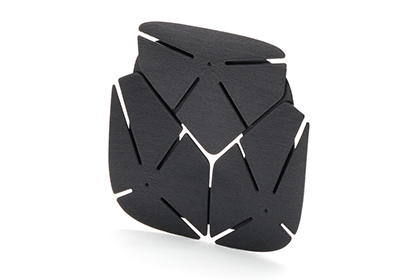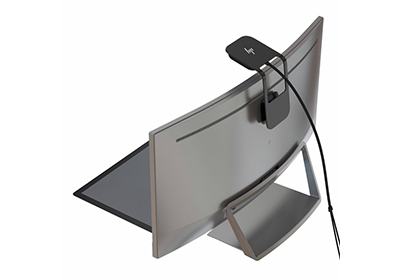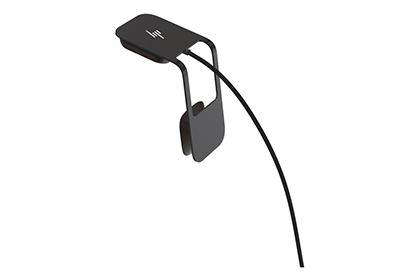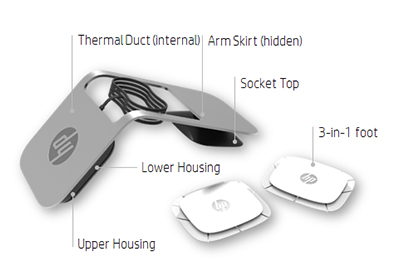|
HP LEVERAGES ITS OWN TECHNOLOGY TO CREATE FINAL PARTS
|
|
|
HP Inc. creates life-changing technology solutions for people and companies all over the world. Through its portfolio of printers, PCs, mobile devices, solutions, and services, HP engineers experiences that amaze.
|
|
|
The HP Z 3D Camera is a unique hands-free, Windows 10–compatible camera that minimizes desktop space and simplifies real-time capture and visualization of objects and documents. The camera helps with workflow and collaboration, adding down-facing 3D objects, 2D documents, and live video capture to displays.
|
The 3-in-1 foot assembly used to be composed of three separate Injection Molded parts, but HP employed its own Multi Jet Fusion (MJF) technology to accelerate production and 3D print one final part, resulting in the following benefits:
|
|
INDUSTRY
Consumer goods and electronics
SECTOR
HH appliances and electronics
MATERIAL
HP 3D High Reusability1 PA 12
POST-PROCESSING
Bead blasting
|
|
|
|

1 HP MJF-produced part instead of 3 Injection Molded parts
|
|
|
Cost savings. Printing parts with Injection Molding costs $2.42 per part, while HP MJF parts can be produced for only $0.36 per part.
Time reduction. Machined prototypes take weeks to make, but HP MJF prototypes are available in days.
Design freedom. Production with HP MJF allows for optimized orientation, resulting in higher quality; a unique petal geometry to conform to compound curved surfaces; and a customized hole shape for powder removal.
|
|
|

HP Z 3D Camera
|
|
|
|

HP Z 3D Camera |
|
|
|

HP MJF-produced Parts |
|
|
|
1.Based on using recommended packing densities and compared to selective laser sintering (SLS)
technology, offers excellent reusability without sacrificing mechanical performance. Tested according to
ASTM D638, ASTM D256, ASTM D790, and ASTM D648 and using a 3D scanner for dimensional accuracy.
Testing monitored using statistical process controls. HP Jet Fusion 3D Printing Solutions using HP 3D H
Reusability PA 12 provide up to 80% post-production surplus powder Reusability, producing functional
parts batch after batch. For testing, material is aged in real printing conditions and powder is tracked by
generations (worst case for reusability). Parts are then made from each generation and tested for
mechanical properties and accuracy.
|
|